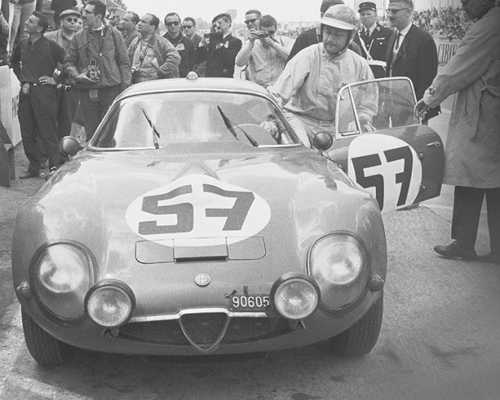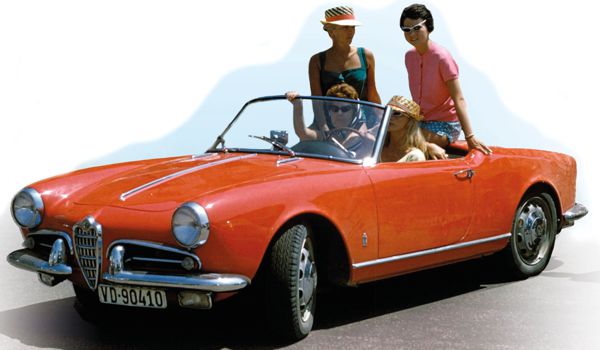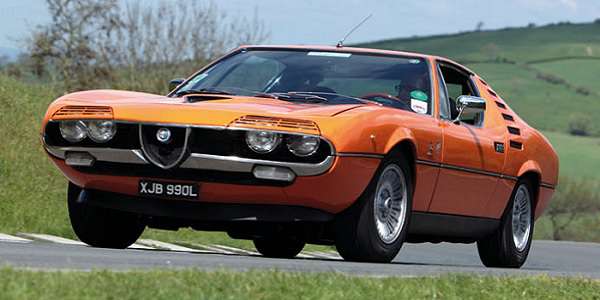Italian marque Alfa Romeo is a fully paid-up member of the classic car establishment. For enthusiasts, it stands for relatively affordable sports cars and roadsters with, in the classic period, exceptional mechanical sophistication and driving pleasure. But Alfa’s portfolio also includes sport sedans and historic race winners.

The name of Alfa Romeo is an amalgam of the acronym for Anonima Lombarda Fabbrica Automobili (effectively, the Lombardy Car Factory) and the surname of Nicola Romeo. It was Romeo, a businessman who was leading a buyout consortium, who acquired the Milan-based company-originally, in 1906, an offshoot of the French Darracq concern-in 1915, renaming it in 1920.
Back in 1910 the first Alfa, the 24 HP with a 4,082 cc, straight-four cylinder engine, was the work of chief engineer Giuseppe Merosi. It promptly won the 1911 Targa Florio road race around Sicily, hinting at Alfa Romeo’s competition penchant, and Merosi used racing-derived knowledge to develop the double-overheadcamshaft engine design.
The first car fully titled an Alfa Romeo was the G1 of 1920, a 6.3-liter straight-six in which great names such as Enzo Ferrari and Giuseppe Campari stormed racing grids. In 1923, the company’s new chief engineer Vittorio Jano began work on a new straight-eight engine that was put into the P2 Grand Prix car. This swept the board in 1925, winning the first Grand Prix World Championship.

In 1938, Alfa Romeo won the Mille Miglia race for the 10th time since 1928.
The other Janodesigned cars-including the P3, 6C 1750, and 8C 2300-enabled Alfa Romeo to dominate all the major theaters of motorsport, including Grands Prix and the Le Mans 24-Hours in France. Coachbuilders such as Pinin Farina (renamed Pininfarina in 1960) and Touring crafted beautiful bodies on Alfa Romeo chassis such as the 8C 2900B of 1938, in the process creating some of the most desirable road cars of the era.
After World War II, and now under Italian state ownership, the sporting exuberance of Alfa’s offerings was toned down, and the firm began to concentrate on the 1900 and Giulia family sedans. However, these cars still had sporting, twin-camshaft engines, and by 1954 the delightful Giulia Spider and Sprint coupe were on sale. The highly aerodynamic Giulia Super sedan of 1962, with its five-speed transmission, brought its own spin-offs, the beautiful Duetto Spider (Pininfarina) and GT Junior/GTV (Bertone) with engines from 1.3 to 2.0 liters. It was not until 1993 that the last of these scintillating sports cars bowed out.
The company began to take things in a completely new direction in 1971 with the advent of the Alfasud. This all-new, front-wheel-drive family car set new benchmarks for handling (only surpassed by the VW Golf GTI in 1975), and provided work for a brand-new factory in Naples (hence, Alfa Sud, or Alfa South). At the other end of the scale was the 1970 Montreal, a V8-engined supercar with striking Bertone lines, while the 1972 Alfetta gave rise to a host of derivatives including the Giulietta, Alfa 6, and eventually the 75.

Back on the track, Alfa Romeo had retired from Formula 1 after 1951, but from the 1960s it competed in the World Sportscar Championship, triumphing in 1975 and Also from the early 1960s, tuned Alfa Romeo road cars began to appear in rallying, touring car, and GT series, clinching a mass of victories.
The company struggled to make money, and Fiat stepped in in 1986. Cost savings were made by sharing components with other Fiat Group cars, but there was a return to sport sedan form in 1998 with the 156. It grabbed the European Car Of The Year award, as did the 147 of 2001. The new Spider and GTV of 1995 were well received, and highlights since then have included the sporty Brera, the compact MiTo, and the new Giulietta in 2010, the marque’s centenary year.
In the 1950s, Alfa Romeo assembled the Renault Dauphine for the Italian market, and in the 1980s put its engines into a locally-made Nissan Cherry. Neither venture was lauded by fans of the marque.